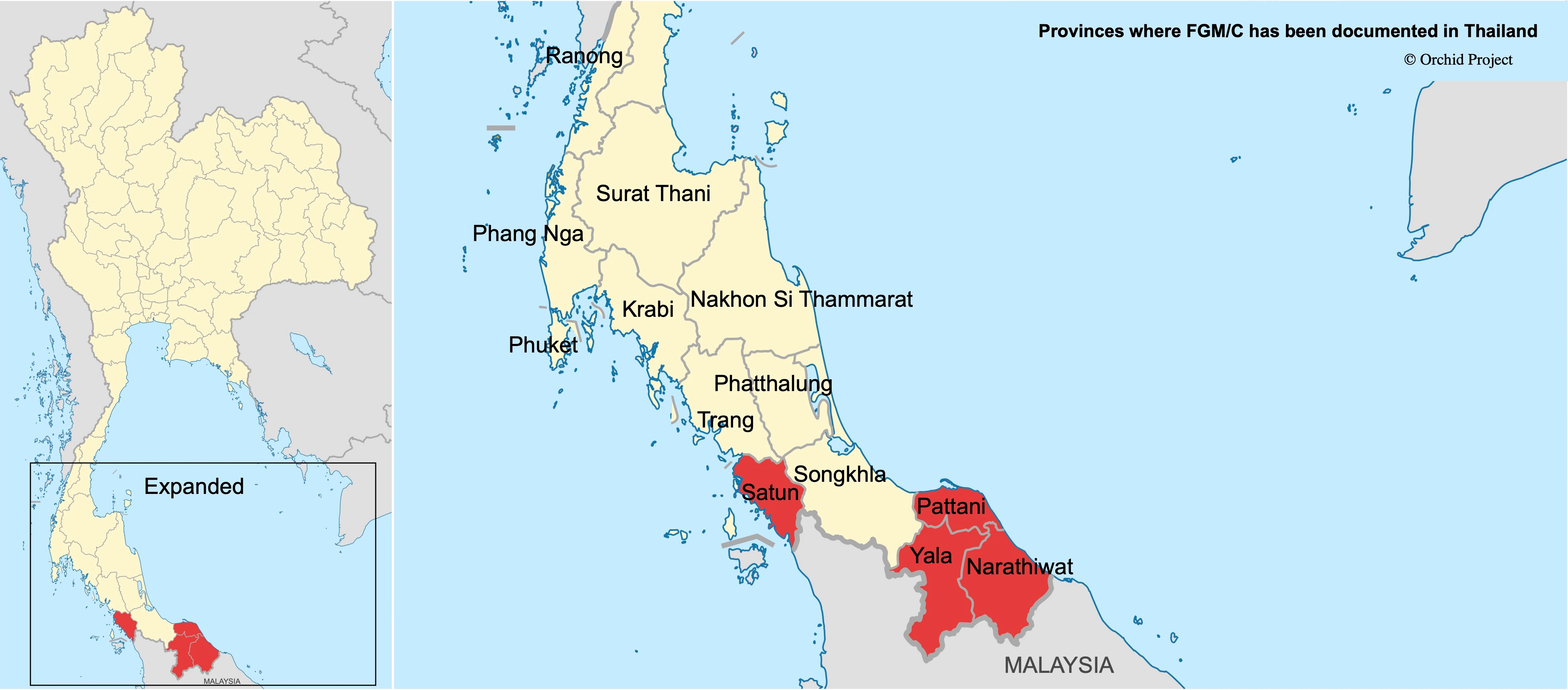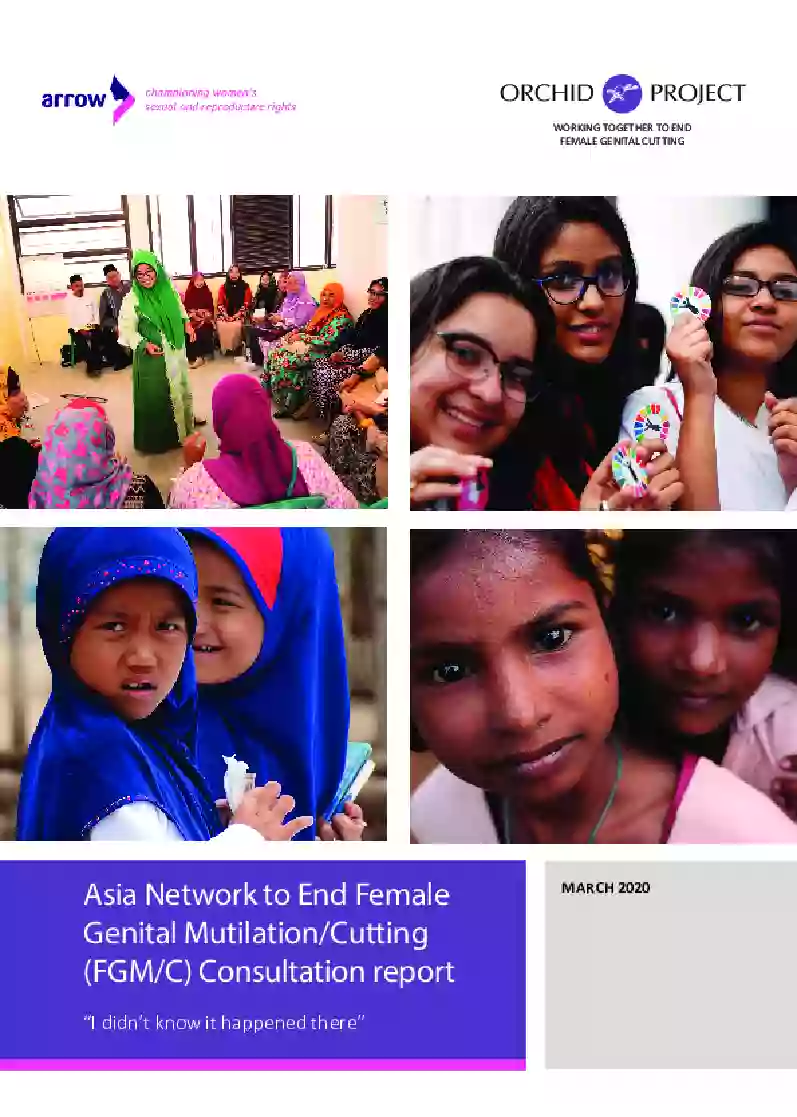Home | Research & Resources | Thailand
Key Findings
In Thailand, FGC is usually referred to as sunat
Sunat is mainly practised within the Malay and Dawoodi Bohra communities, where prevalence is estimated to be 75–90%
Place
The prevalence of sunat in southern Thailand’s Muslim community is believed to be similar to that in Kelantan, Malaysia
Age
Malay-Muslim girls are typically cut in infancy; Dawoodi Bohra girls are usually cut at the age of seven years
Type
The most-commonly practised types appear to be Type 1 and Type 4
Agent
Traditionally, bidans carried out sunat; now, doctors are more frequently being tasked with it
Distribution of FGC across Thailand
No national surveys have been carried out regarding sunat in Thailand. It is known, however, that some Muslim groups in Thailand undertake the practice, including Malay and Dawoodi Bohra communities.
Thailand’s Muslim population largely resides in three provinces in the south of Thailand: Pattani, Narathiwat and Yala. There, it is estimated that Malay Muslims form about 75% of the population. In addition, academic anthropological studies about the nature and practice of sunat were carried out between 2005 and 2010 in Satun province, which is also in southern Thailand.
Muslims comprise 5.4% (3.8 million) of Thailand’s total population of approximately 71 million. The prevalence of sunat in southern Thailand’s Muslim community is believed to be similar to that in Kelantan, Malaysia, as the southernmost Thai provinces are culturally and religiously similar to that part of Malaysia. Kelantan has one of the highest sunat prevalence figures in Malaysia (88.5% of female ethnic Malays).
The Dawoodi Bohra are understood to mainly reside in and around Bangkok. Again, no survey of sunat prevalence has been carried out in this community in Thailand, but surveys carried out with Dawoodi Bohra women in India suggest an sunat prevalence of between 75% and 85% of women.
FGC Legislation in Thailand
There is no law against sunat in Thailand.
In theory, however, it could fall under Section 295 of Thailand’s Criminal Code.
Development Indicators
Population Growth
70,809,234 (as at 23 February 2024) with a 0.38% growth rate (est.)
Infant Mortality
6.3 deaths per 1,000 live births (2024 est.)
Maternal Mortality
29 deaths per 100,000 live births (2020 est.)
SDG Gender Index
60 out of 144 countries in 2020



.webp)
.webp)
